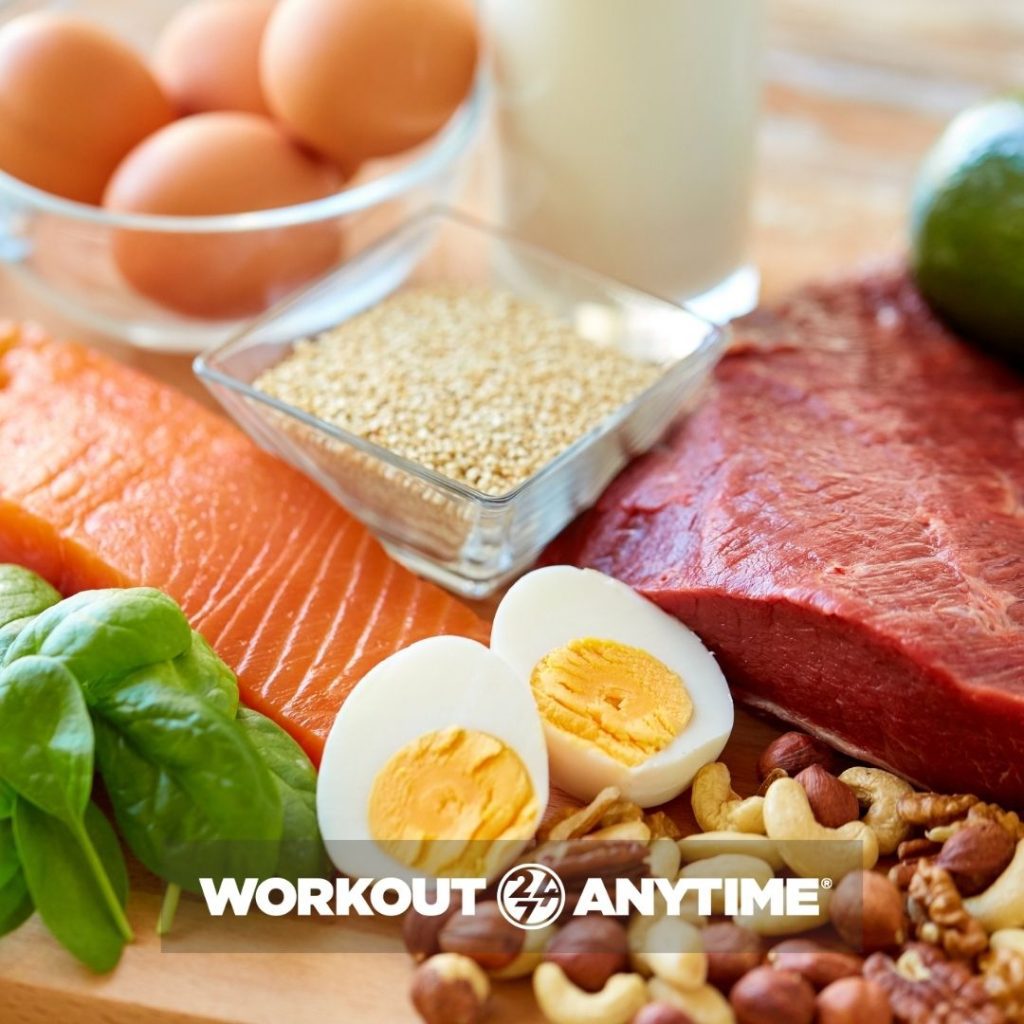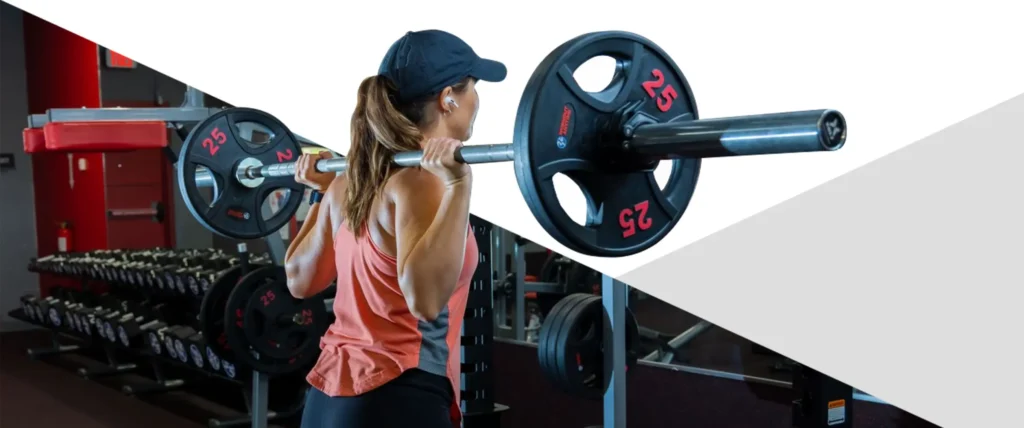What Is Protein And How Much Do We Need?

The three main macronutrients are protein, fats and carbohydrates, with ‘macro’ simply meaning large, and these are the nutrients that are most common in our diet. On the flipside, micronutrients are those that are in much lower quantities in our diet.
This article will look at protein and provide you with an understanding of the macronutrient and its importance in human health.
Protein
Protein is incredibly important, and without it our body composition and health greatly suffer as a result.
Proteins are an essential nutrient and can be broken down into 20 building blocks known as amino acids. Out of these 20 amino acids, 9 are essential as the body cannot make them itself. This means that we must obtain these from the diet, through a variety of animal and plant-based sources. And yes, it is possible to source all of these from plant-based sources. The other 11 aminos can be synthesized by the body, making them non-essential.
The table below shows how protein can be broken down into its essential and non-essential amino acids.
| ESSENTIAL AMINO ACIDS | NON-ESSENTIAL AMINO ACIDS |
| Histidine | Alanine |
| Isoleucine* | Arginine** |
| Leucine* | Asparagine |
| Lysine | Aspartic Acid |
| Methionine | Cysteine** |
| Phenylalanine | Glutamic Acid |
| Theronine | Glutamine** |
| Typtophan | Glycine** |
| Valine* | Proline** |
| Selenocysteine** | |
| Serine | |
| Taurine** | |
| Tyrosine** |
*Branched-chain amino acids
**Conditionally essential amino acids
Within the 9 essential amino acids, there are 3 branched-chain amino acids (BCAA’s): leucine, isoleucine and valine. These are again different to the others as they do not require metabolizing by the liver, and are therefore taken up directly by skeletal muscle. Also, these 3 aminos are the most important for the manufacture, maintenance and repair of muscle tissue as they are responsible for the “flicking on” of the muscle building process, known as protein synthesis.
Of the three, leucine has shown to be the most effective amino at stimulating protein synthesis (the process of building muscle protein and therefore growth), yet the three work better together to provide a host of benefits and even boost energy during workouts. (1) (2)
Studies show that BCAA supplementation alone can blunt the catabolic hormone cortisol and decrease delayed-onset muscle soreness. (3)
Below is a table that shows the protein quantity in many of the common foods we eat:
| ANIMAL PROTEIN FOODS | 1G EDIBLE PROTEIN PER 100G IN WEIGHT | PLANT & DAIRY PROTEIN FOODS | 1G EDIBLE PROTEIN PER 100G IN WEIGHT |
| Beef Topround Lean | 36.12g | Pumpkin Seeds | 32.97g |
| Pork Bacon | 35.73g | Peanut Butter | 25.09g |
| Beef Brisket Lean | 33.26g | Cheddar Cheese | 24.90g |
| Beef Steak Lean | 31.06g | Monterey Cheese | 24.48g |
| Beef Top Sirloin Lean | 30.55g | Colby Cheese | 23.76g |
| Pork Top Loin | 30.48g | Peanuts | 23.68g |
| Bluefin Tuna | 29.92g | Mozzarella Cheese | 22.17g |
| Turkey Bacon | 29.60g | Almonds | 22.09g |
| Chicken Dark Meat | 28.99g | Pistachio Nuts | 21.35g |
| Oyster | 28.81g | Flaxseeds | 19.50g |
| Beef Tenderloin Lean | 28.51g | Tofu | 17.19g |
| Turkey White Meat | 28.48g | Egg Yolk | 16.89g |
| Beef Kidney | 27.27g | Cashew Nuts | 15.86g |
| Halibut | 26.69g | Hazelnuts | 15.31g |
| ANIMAL PROTEIN FOODS | 1G EDIBLE PROTEIN PER 100G IN WEIGHT | PLANT & DAIRY PROTEIN FOODS | 1G EDIBLE PROTEIN PER 100G IN WEIGHT |
| Cooked Trout | 26.63g | Walnuts | 15.03g |
| Veal Cooked | 25.93g | Fried Egg | 15.03g |
| Beef Liver | 25.51g | Soybeans | 13.63g |
| Cooked Salmon | 25.56g | Whey | 13.10g |
| Goose | 25.16g | Cottage Cheese | 12.93g |
| Caviar | 24.60g | Ricotta Cheese | 12.49g |
| Lamb Cooked | 24.52g | Pecans | 11.26g |
| Freshwater Bass | 24.18g | Lentils | 9.50g |
| Flounder | 24.16g | Wheat Bread | 9.02g |
| Beef T-bone | 24.05g | Acorn Nuts | 8.80g |
| Hamberger 80% Lean | 24.04g | Lima Beans | 7.80g |
| Duck | 23.48g | Macadamia Nuts | 7.79g |
| Turkey | 23g | Mungo Beans | 7.54g |
| Pork Chop | 21.91g | Cranberries | 5.54g |
| Turkey Gizzard | 21.72g | Green Peas | 5.36g |
| Turkey Heart | 21.42g | Ointo beans | 4.86g |
| Anchovy | 20.35g | Kidney Beans | 4.83g |
| Lobster | 20.50g | Yogurt | 3.47g |
| Shrimp Moist Heat | 20.92g | Non-Fat Milk | 3.37g |
| Turkey Liver | 20.02g | Whole Milk | 3.22g |
| Alaska King Crab | 19.35g | White Rice | 2.69g |
| Chicken White Meat | 16.79g | Brown Rice | 2.58g |
Therefore, we must resort to the research that can help us make the right decisions, yet it too seems to vary from source to source.
• The average intake
For a healthy person of a healthy weight who is mainly sedentary and not seeking changes in body composition – then an intake of 0.4 – 0.6 grams of protein per pound body weight is sufficient.
• When losing body fat
Protein has a high thermic effect, which means it requires more energy just to break it down, assimilate and digest than carbohydrates and fat. It also takes longer to digest, and has been shown to reduce appetite compared to carbohydrates and fat. (5) (6)
We also need protein to build muscle, which is very important when following a fat-loss diet. The more muscle you have, the more you’ll burn daily, the less stair-climber sessions you’ll need to do!
Having a high protein intake during a Calorie deficit is also important, as it is an anabolic nutrient, meaning we are more likely to preserve lean body tissue, which can sometimes be broken down when dieting. (9)
• When building muscle
The key to building muscle is a positive protein balance. This is achieved when protein synthesis exceeds protein breakdown. A higher protein diet will upregulate protein synthesis (provided you have evenly spaced meals), which creates a net positive protein balance, resulting in that anabolic (building) environment. (10)
The studies that look at muscle mass and protein intake tend to vary from 0.8-1.0+ gram per pound bodyweight, so it’s safe to say a balanced approach would be most beneficial, so around 1g per pound bodyweight is highly effective. (11) (12)
• Active and elderly
Body composition goals aside, you may find some clients are highly active, through their jobs or activities (such as endurance training).
The research shows a daily intake of 0.5-0.65 grams per pound bodyweight for these types of people. (13)
Elderly people can also benefit from more protein to help prevent aging diseases such as osteoporosis and sarcopenia (reduced muscle mass).
The research shows a daily intake of 0.45-0.6 gram per pound bodyweight. (14) Finally, those recovering from injuries may also benefit from a higher protein diet.
Timing & Type
We have already discussed that we assess the quality of our protein sources via the BV, therefore the type of protein we ingest will improve the results we see.
We also know that animal protein sources are more effective than most plant-based sources, at stimulating muscle protein synthesis due to their digestibility (low-fiber) and amino acid profile.
Also, proteins that contain high levels of BCAA’s, particularly leucine, will produce greater protein synthesis, improve insulin signaling and spare glucose in muscle cells.
Dangers Of A High Protein Diet
Many people will try and tell us that a high protein diet is bad for us, and that it is linked to cardiovascular disease, dehydration, calcium loss and damaged liver and kidney function.
The question that must be asked is – show us the accurate research.
The small amount of research that may support these dangers appears - just like many things in the nutritional world - to have been greatly exaggerated.
Here’s what you need to know:
• There is no link to protein causing increased risk of coronary heart disease (15),
• There is no link to protein causing liver or kidney damage in healthy subjects (15),
• Recent studies show a positive relationship between protein intake and bone health. (16)
Summary
You should now understand the importance of protein in the human diet, how it is metabolized, how to measure quality, assess daily intake for various populations, compare protein types and de bunk some of the myths that surround it.
We Stand By Our Values
We offer affordable fitness with high-quality equipment whenever you want it. Fitness that fits your life means there’s no excuse, just results.

Attitude
We drive a positive culture of confidence and enthusiasm by doing the right thing for all our members, partners, and staff.

Care
We provide our members, partners and staff with an environment that is welcoming and respectful of each individual.

Excellence
We are committed to the success of our members and partners through the expertise and dedication of our team.




